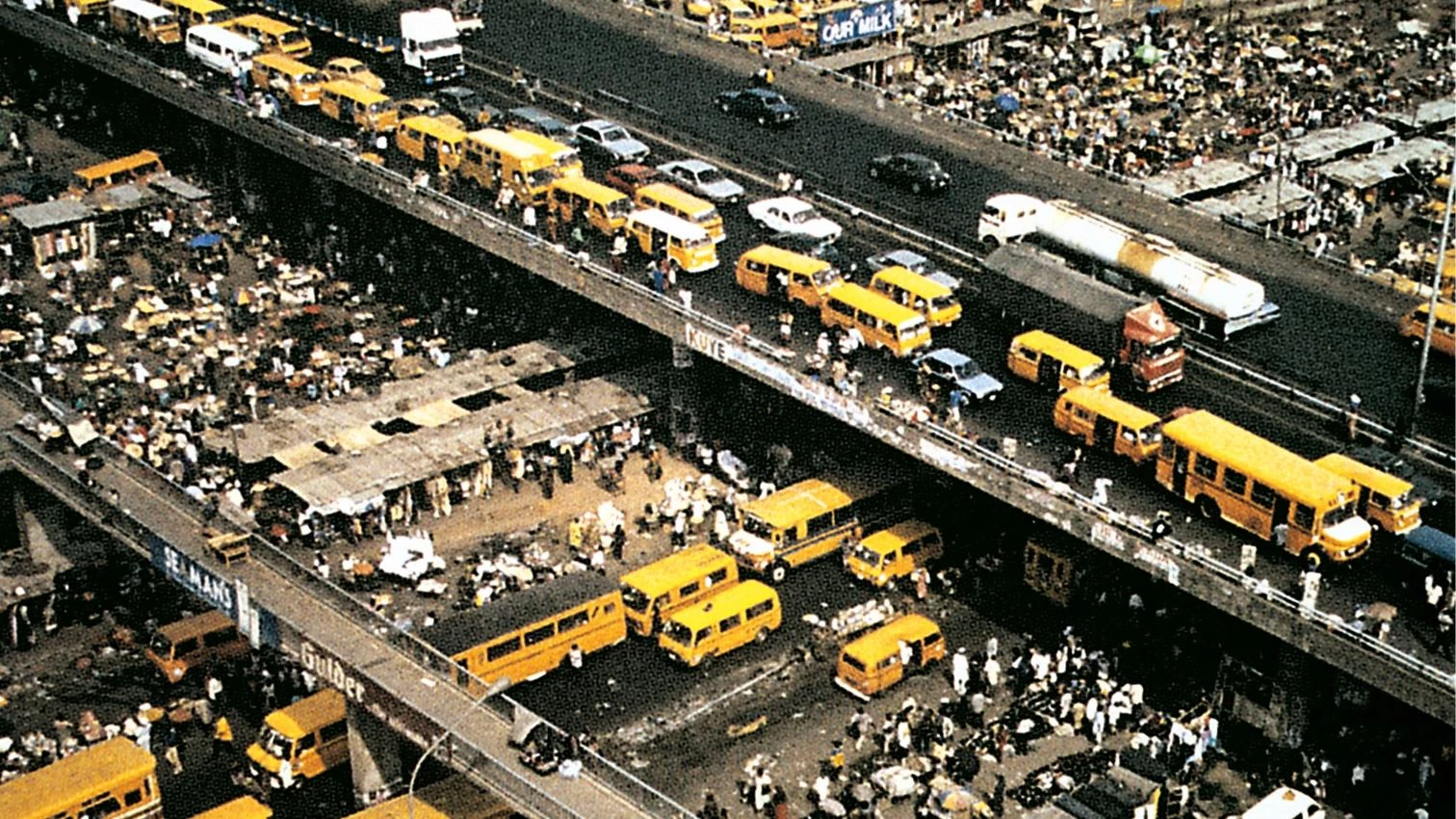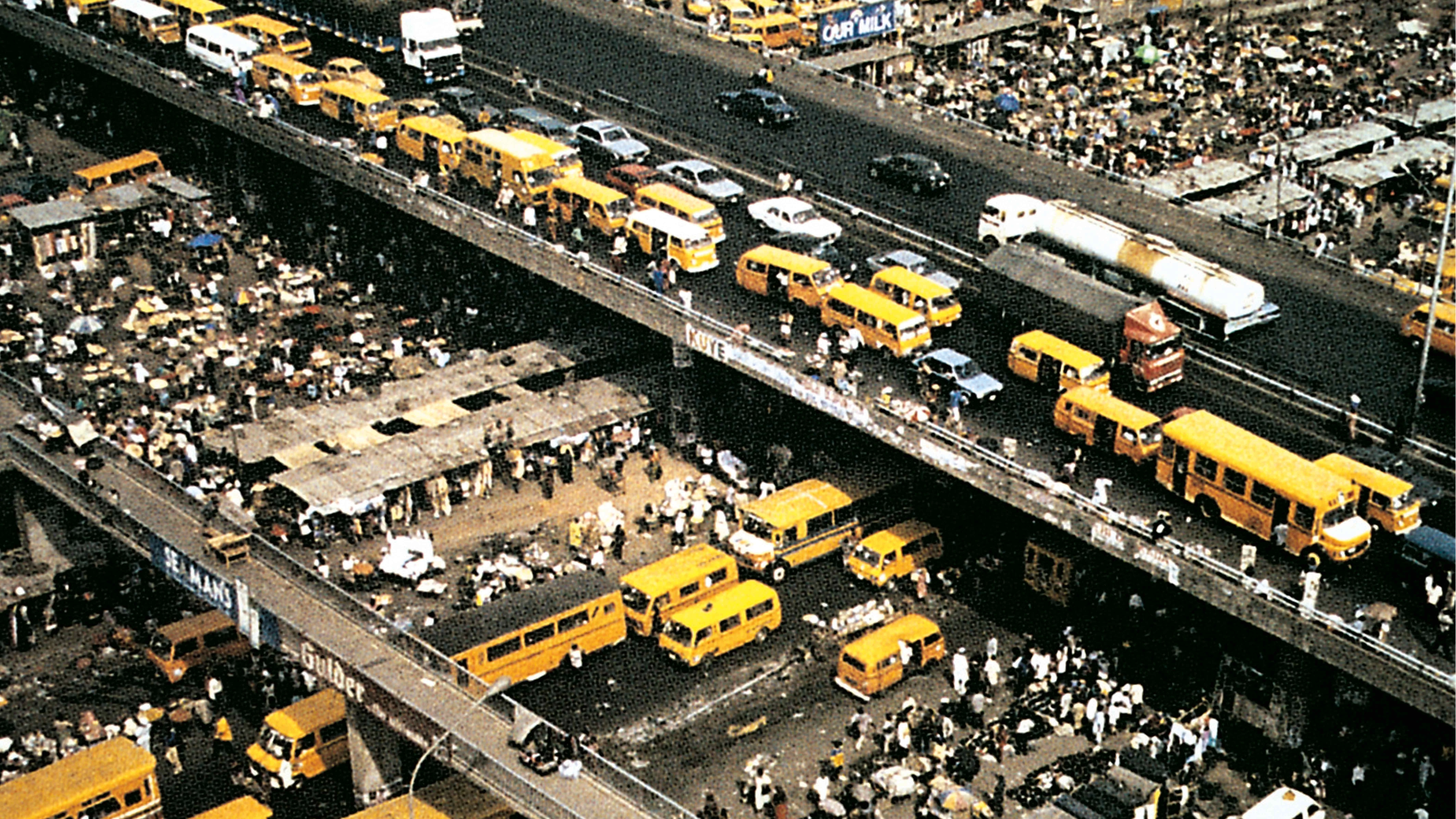
Lagos, Nigeria, 2000 (Harvard Project on the City)
We pretend to keep organizing the world with the geometry of the eye, but contemporary landscapes are subordinated to the double discipline of density and movement. Human reason interprets the environment with the same tools that it uses to make it useful: repeated visual patterns at the service of both an analytic and a productive logic. However, the mechanistic approach that has turned the reticular plan into the symbol of any colonization – from the Roman military camp or the city defined by the Spanish laws for American colonies to the nineteenth century expansions or the Jeffersonian geographic grid – comes into conflict with topographic accidents, which alter the Cartesian monotony of the endless extension; with the processes of organic growth or spontaneous aggregation, which ignore the normative layouts to give way to landscapes of friendly, picturesque variety; and with the geometry characteristic of the infrastructures of mechanical movement, which tighten or cut the uniformity of the regular city. The rejection of modern homogeneous order – which appreciates in modular disciplines the servitude of military order, assembly lines or penitentiary colonies – finds unexpected allies not only in the random shapes of abrupt geography or the unpredictable events of premodern fate, but in the forms of postenlightened or postmechanistic transmodernity...[+]






